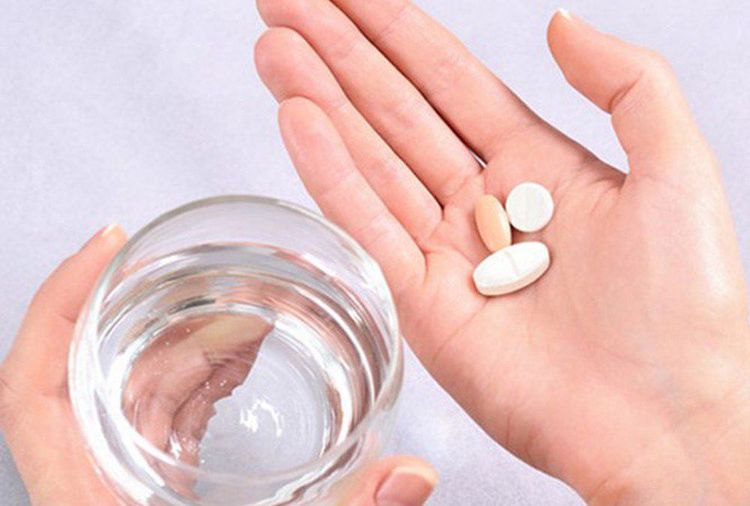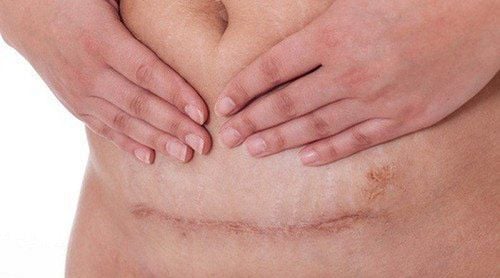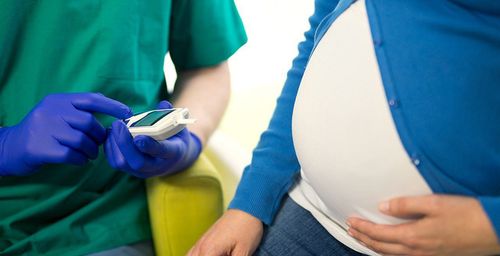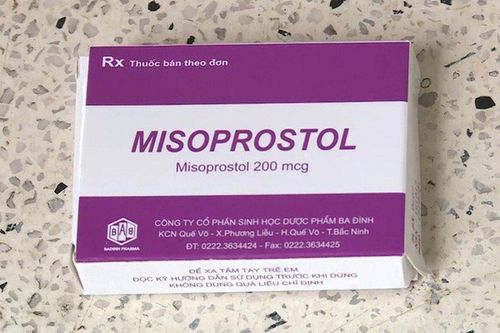This is an automatically translated article.
The article was professionally consulted by Specialist Doctor II Pham Thi Tuyet Mai - Obstetrician and Gynecologist - Department of Obstetrics and Gynecology - Vinmec Hai Phong International General Hospital.The placenta is considered the most dangerous stage in a birth because of the highest risk of complications. Uterine control is performed after placental abruption or after artificial placental detachment to check for residual placental or membranous membranes and uterine integrity.
Missing placenta or membrane can lead to postpartum hemorrhage, postpartum infection is very dangerous, so pregnant women need to have uterine control if there is a risk of retained placenta or membrane.
1. What is uterine control?
Uterine control is a medical procedure that is performed after the placenta has passed or immediately after the artificial placenta has been removed to check for the presence of placenta or membrane, the integrity of the uterus and removal of blood clots. uterus.
2. When is uterine control needed?
Uterine control is indicated in the following cases:
Maternal bright red bleeding after giving birth. If the vegetable inspection shows that a part of the vegetables is suspected, then it is necessary to check the uterus to check for the lack of vegetables after delivery. Vegetable membrane. This type of placenta comes out before the case of this type of placenta, causing the placenta to be missed, so it is necessary to control the uterus. Check the integrity of the uterus for uterine rupture after difficult procedures such as: Forceps, intrauterine rotation, abortion in case of fetal death in the uterus...or surgical scars on the uterus get pregnant. Note: Pregnant women are in shock, must resuscitate before controlling the uterus.
3. Steps to control the uterus
3.1 Prepare
Medical supplies: Sterile gloves, sterile towels, urinary catheters, antiseptic. Medicines: Resuscitation, heart support to prevent shock, drugs to contract the uterus Maternity: Explain to the mother, encourage the mother to lie comfortably, do not contract the abdominal wall, use pain relievers and antiseptics household. Healthcare workers: Doctors or obstetricians wash their hands, wear hats, and wear sterile gloves. 3.2 Steps to take
If controlling the uterus after removing the artificial placenta: after removing the placenta, do not withdraw the right hand from the uterus and vagina, but use that hand to control the uterus.
Step 1: One hand is placed on the abdomen to hold the bottom of the uterus, the purpose is to fix the uterus.
Step 2:
Put the other hand into the vagina, through the cervix, into the uterine cavity to the bottom of the uterus, then check in turn: fundus of uterus, front, back, sides and two horns of uterus bow with fingertips. Normally, the uterine cavity is not lumpy. If you see pieces of vegetables, vegetable membranes, gently scrape, and at the same time check to see if the uterus is cracked. After checking and removing all the remaining vegetables, pull out your hand to avoid putting your hand in many times, which is easy to shock and infection and increase the risk of shock for pregnant women.
In case if you can't put your hand into the uterus because the waist is tight, you have to wait, gradually dilate the cervix by hand, inject drugs to reduce uterine contractility. Step 3: After controlling, if the uterine contraction is not good, use the hand in the uterine cavity to raise the bottom of the uterus close to the abdominal wall for the assistant to inject 5 units of Oxytocin into the uterine muscle through the abdominal wall, then withdraw the table. hand out.
Step 4: To avoid the risk of infection after uterine control, the mother is prescribed antibiotics for 5 days.
4. Monitoring and dealing with complications after controlling the uterus

Monitor the mother's pulse, temperature, and blood pressure. Uterine contractions, the amount and nature of blood flowing from the uterus. If after checking the uterus, there is still bright red blood flowing from the vagina, it is necessary to check for lesions in the cervix, vagina, perineum, whether the uterus is elastic or not or if the mother has a disorder. coagulopathy? If the pregnant woman is in shock, it is necessary to treat them with quick and active resuscitation with drugs and means. Uterine control is necessary in women with bleeding after placental abruption, placenta, or membrane, in those at risk of uterine rupture. After the procedure, pregnant women need to be monitored and promptly handled events that occur.
Vinmec International General Hospital is one of the hospitals that not only ensures professional quality with a team of leading medical doctors, modern equipment and technology, but also stands out for its examination and consultation services. comprehensive and professional medical consultation and treatment; civilized, polite, safe and sterile medical examination and treatment space.
Please dial HOTLINE for more information or register for an appointment HERE. Download MyVinmec app to make appointments faster and to manage your bookings easily.














